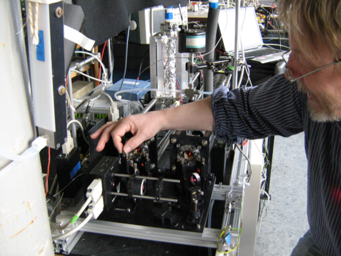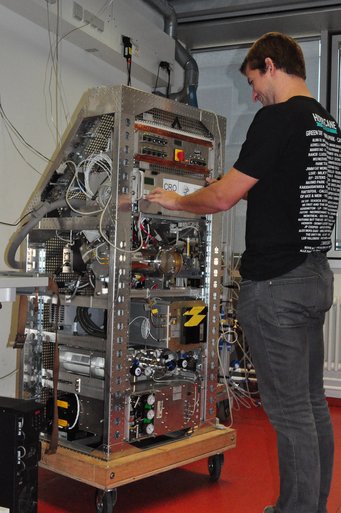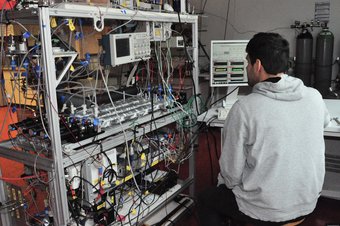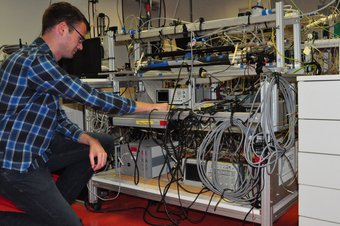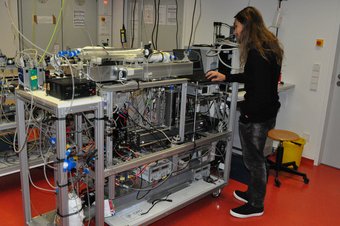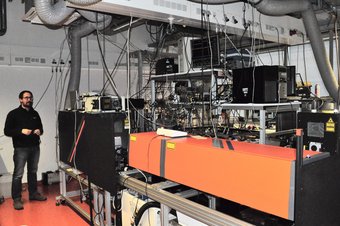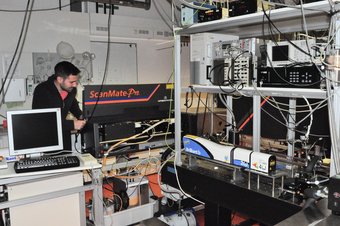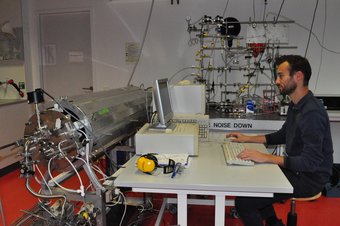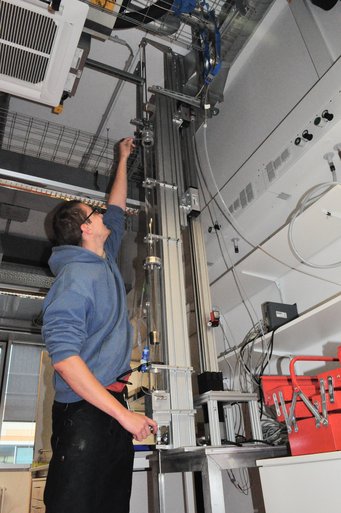Methods of Group Crowley
Field 1. Cavity-Ring-Down Spectrometer (CRDS) for NO3 and N2O5
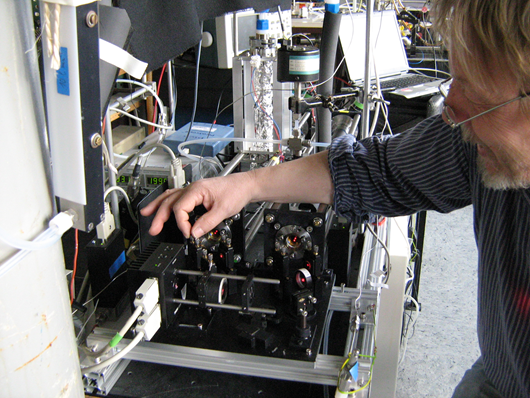
The CRDS utilises the strong absorption feature of NO3 at 662 nm to measure its optical extinction over a path length of more than 35 km, achieved by off-axis coupling of the light from a power modulated laser-diode into an optical cavity. N2O5 is measured indirectly following thermal dissociation to NO3.
Field 2. Chemical Ionisation Quadrupole Mass Spectrometer (CIMS-QMS)
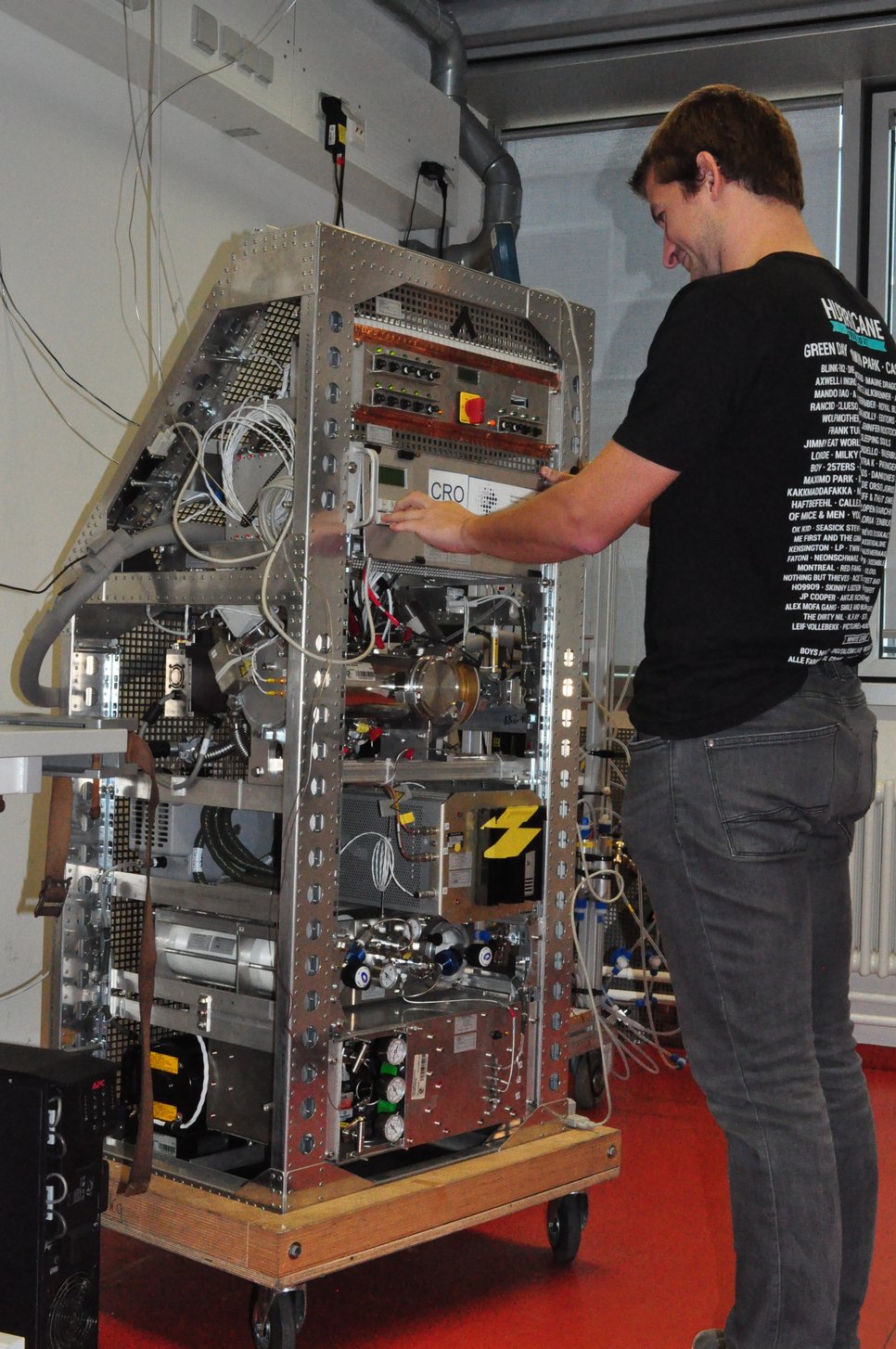
The CIMS-QMS is a field instrument which we have used for measurement of PAN, peracetic acid, ClNO2, HCl, SO2 and HNO3. Neutral trace-gases are sampled into a constant pressure ion-molecule reactor where secondary ions are generated prior to de-clustering (octopole) and mass selection (quadrupole). The CIMS-QMS is designed for operation both in aircraft and ground-based campaigns.
Eger, P. G., Helleis, F., Schuster, G., Phillips, G. J., Lelieveld, J., and Crowley, J. N.: Chemical ionization quadrupole mass spectrometer with an electrical discharge ion source for atmospheric trace gas measurement, Atmos. Meas. Tech., 12, 1935-1954, 10.5194/amt-12-1935-2019, 2019.
Field 3. Cavity-Ring-Down Spectrometer (CRDS) for NO2 , PANs and ANs
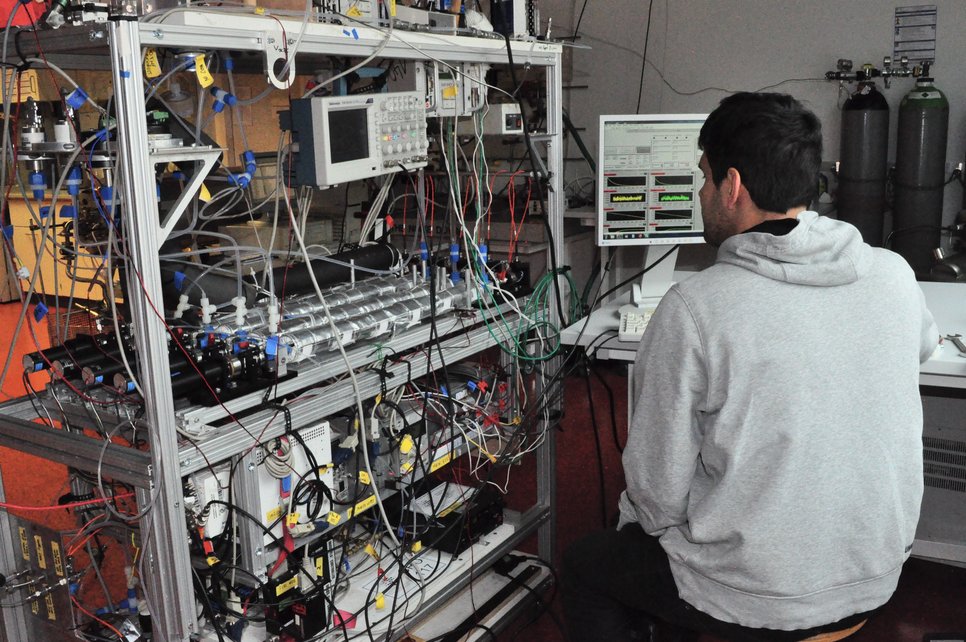
This CRDS measures the optical extinction of NO2 at ~ 400 nm over a path length of more than 10 km. Three cavities are employed, one used for ambient NO2, the second and third for measuring the NO2 product of the thermal dissociation of PANs (at ~250 °C) or Alkyl Nitrates (ANs) at ~400 °C.
Thieser, J., Schuster, G., Phillips, G. J., Reiffs, A., Parchatka, U., Pöhler, D., Lelieveld, J., and Crowley, J. N.: A two-channel, thermal dissociation cavity-ringdown spectrometer for the detection of ambient NO2, RO2NO2 and RONO2, Atmos. Meas. Tech., 9, 553-576, 2016.
Sobanski, N., Schuladen, J., Schuster, G., Lelieveld, J., and Crowley, J. N.: A five-channel cavity ring-down spectrometer for the detection of NO2, NO3, N2O5, total peroxy nitrates and total alkyl nitrates, Atmos. Meas. Tech., 9, 5103-5118, 10.5194/amt-9-5103-2016, 2016.
Field 4. Cavity-Ring-Down Spectrometer (CRDS) for NOX and NOY
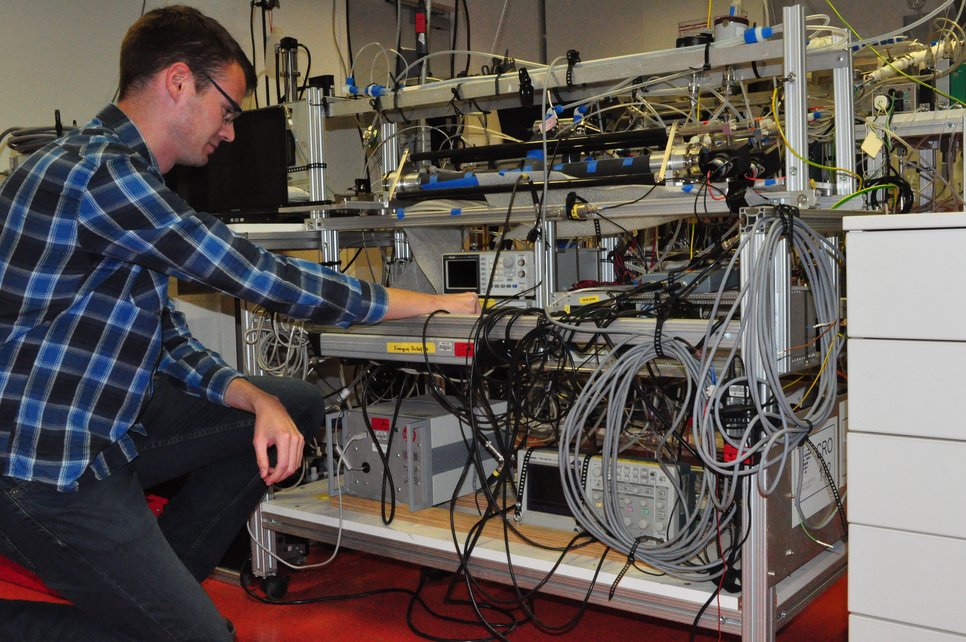
This CRDS thermally converts NOY to NO2 at ≈ 800 °C which is then detected via its optical extinction of NO2 at ~ 400 nm over a path length of more than 10 km. It also oxidises NO to NO2, the total NO2 then providing a measurement of NOX. Modulated use of a denuder on one inlet enables separation of gas- and particle phase NOY.
Field 5. Cavity-Ring-Down Spectrometer for NO3-Reactivity
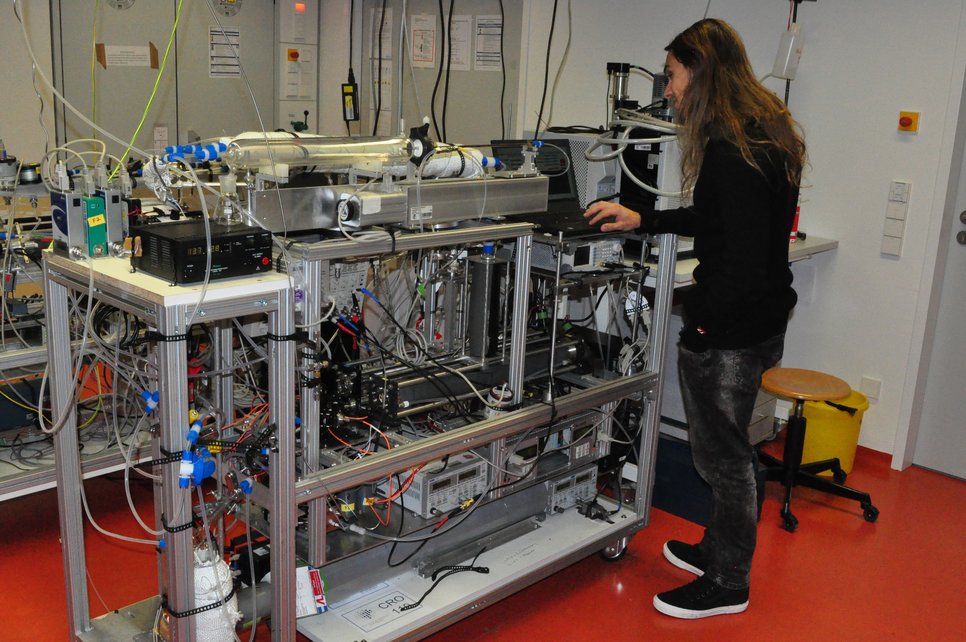
A flow-tube is coupled to a CRDS to detect the change on concentration of synthetically generated NO3 (a few tens of ppt) over a defined reaction time and thereby enables us to assess the reactivity of the ambient air towards this night-time radical. Through variation of the reaction time and the dilution factor, NO3 reactivities between ~ 0.001 and 0.1 s-1 can be accurately measured.
Liebmann, J. M., Schuster, G., Schuladen, J. B., Sobanski, N., Lelieveld, J., and Crowley, J. N.: Measurement of ambient NO3 reactivity: Design, characterization and first deployment of a new instrument, Atmos. Meas. Tech., 2017, 1241-1258, 10.5194/amt-2016-381, 2017.
Lab 1. Pulsed Photolysis 1 (PLP – LIF / RF)
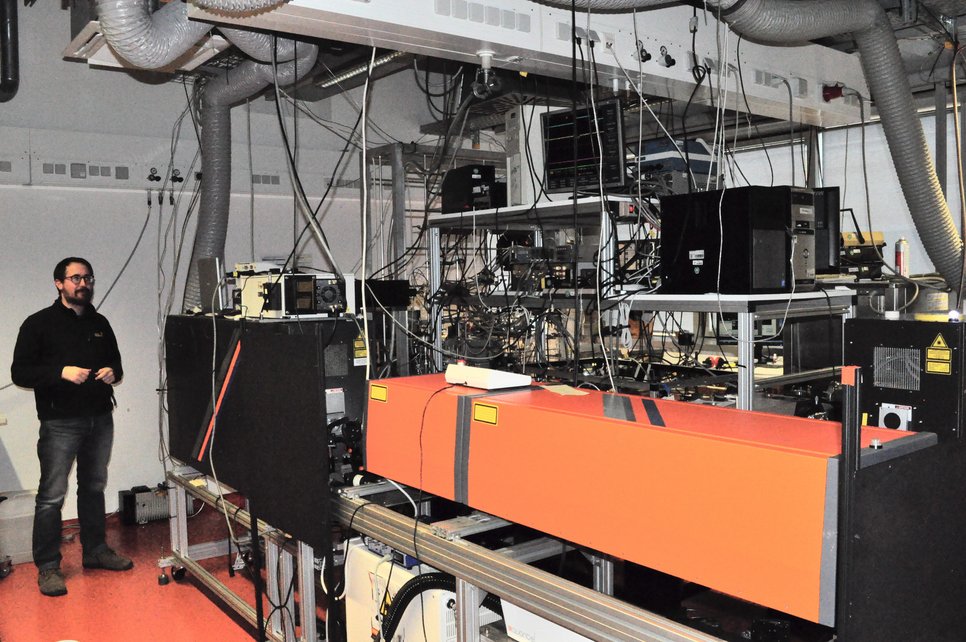
Pulsed Laser Photolysis (PLP) radical generation is used to measure temperature and pressure dependent rate coefficients, product yields and photolysis quantum yields in the gas-phase. An exciplex laser is used to generate radicals (detected in real time using Laser Induced Fluorescence (LIF)) or atoms (detected using resonance fluorescence, RF). Reagent concentrations are monitored online by optical UV/Vis absorption spectroscopy.
Lab 2. Pulsed Photolysis 2 (PLP – LIF / TAS)
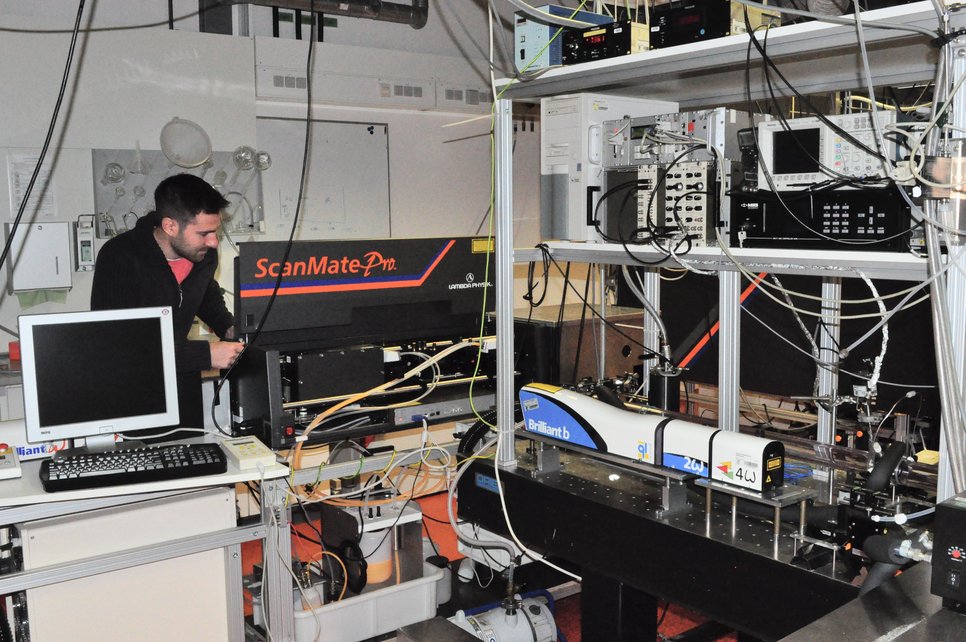
Chemistry is initiated by Pulsed Laser Photolysis (PLP) (Exciplex and Nd-YAG lasers) and followed in real time by monitoring reactants and products using Laser Induced Fluorescence (LIF) or Transient U/Vis Absorption Spectroscopy (TAS). Precursor concentrations are measured by FTIR and VUV absorption spectroscopy. Rate coefficients, quantum yields and reaction mechanisms can be obtained using this apparatus.
Lab 3. Quartz Reaction Chamber (QRC) with FTIR
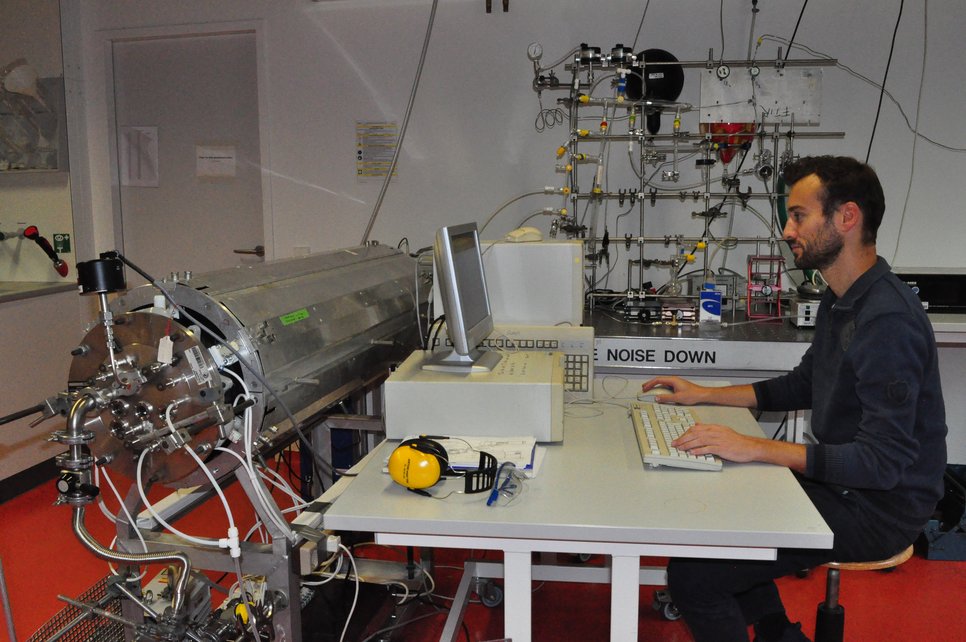
The QRC is a cylindrical quartz reactor of volume 45 l equipped with internal multi-path optics to give an effective infra-red optical path–length of ~30 m. Photolysis is provided by appropriate lamps distributed around the cell. FTIR spectra (resolution of up to 0.02 cm-1) are recording using a Bomem DA-008 spectrometer with MCT detector.
Lab 4. Aerosol Flow Tube (AFT)
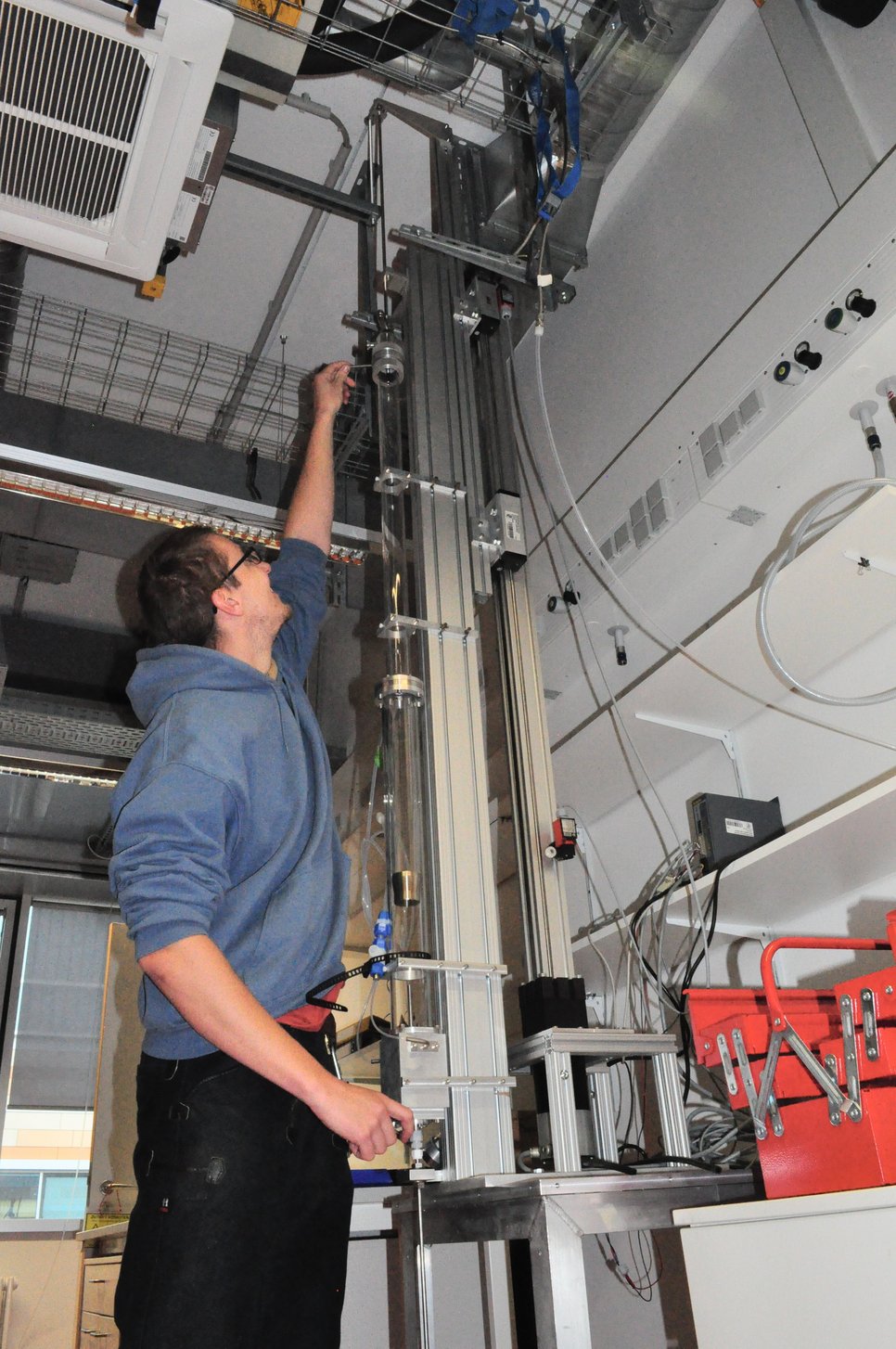
The aerosol flow tube is an atmospheric pressure, laminar flow tube in which aerosol can interact with various trace gases at different relative humidities. Trace gases are monitored using Cavity-Ring-Down Spectroscopy or Chemical Ionisation Mass Spectrometry. Particles (size and number concentration) are measured using an aerodynamic particle sizer or electrostatic classifier with condensation particle counter. Variation of contact time and particle surface area allows us to derive kinetic data for heterogeneous reactions.
